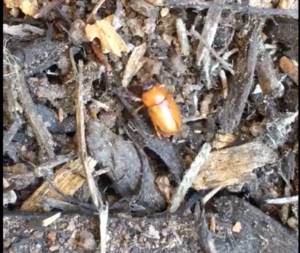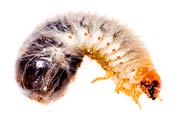How To Get Rid Of The June Bug
The June Bug, also known as the June Beetle or May Beetle, can become real pests to homeowners during the spring and summer. They live in people’s yards and cause great damage to lawns, flowers, plants, and trees by eating them. Fortunately for homeowners, the June Bug can be controlled and prevented by calling in a professional pest control service and by performing DIY tasks.
Facts about the June Bug
● June Bugs are around 2.5cm long, their bodies are dark green and brown, their undersides are metallic gold or green, and they have spiny legs.
● Midsummer, the female June Bugs will lay their eggs and around 18 days later they will hatch. They only live for one year.
● They are most active during the nighttime, and they’re drawn to light sources.
● June Bugs are completely harmless to humans and animals. Bites, disease, and stings are nothing to worry about, as these little pests don’t inflict any of them.
● Bad news for the proud yard owners, adult June Bugs are harmful to your trees, lawn, and other plants. However, the young grub worm (larvae stage of the June Bug) can be even more destructive as they live under the ground and feed on the roots of your plants and lawn.
● They will damage your lawn, leaving it with gray dead patches. Flowers and plants will die if the grubs are feeding on their roots. They also feed on moss and the bark off of trees. This can leave your trees looking patchy.
● They can cause your soil to become ‘spongy’ by creating tunnels underground. If your lawn doesn’t feel very solid, this can be a sign you have an infestation of them under your lawn.
● They are found all over North America, including San Antonio, and lots of other places around the world.
What can you do to control the June Bugs
To properly prevent June Bugs, you need to take action mid-summer to the start of fall, as this is when the female June Bugs start laying their eggs. If adult June Bugs are already around, then it’s too late to do anything that would be really helpful, but you can still eliminate some of the adult ones by using pesticides.
When a pesticide is used, you need to take into account that it can potentially cause more damage to your yard than the June Bugs would. The pesticide is best applied by a professional exterminator; they have a lot of experience in applying pesticides and will cause less damage as they’ll be more precise about where they put it.
Below are some ways that you can prevent the June Bug from destroying your yard in the future:
Keep your lawn healthy – You can keep your lawn healthy and prevent June Bugs by putting down seeds on the bare spots of your yard. They prefer to lay their eggs in the short grass so in the summer, don’t cut your grass too short. Avoid overwatering or under watering your lawn during the spring, so you get deep, healthy roots. You should also keep your lawn aerated.
If you aren’t a natural gardener and think the job is best left to a professional, then call a San Antonio lawn care services company. They’ll send over a member of their team to help you keep your lawn healthy.
Milky spore disease – This is a natural disease that can help to exterminate the June Bugs organically. It isn’t harmful to earthworms, which are needed to maintain a healthy lawn, but it is damaging to the June Bugs larvae. All you need to do is sprinkle it on your lawn, then water your garden for around 15 minutes or put it down just before it’s going to rain. Just one treatment can last up to 15 years.
Get rid of any damage – When June Bugs are destroying your lawn it’s quite obvious; you will see damaged patches where the grass has died, but this is also helpful as you’ll know where they are attacking. If you see some damage on your lawn, dig it up. You will find some grub within the soil, and it’s best to destroy them so they can’t cause any further damage or grow into adults.
The June Bug is a lot less active in the morning, so this is the best time to get rid of them. You will most likely find them on plants so shake them off and destroy them. In the evening, since they are attracted to light, you can use this to your advantage. Draw them towards you using a torch or lamp then you can destroy them.
Natural predators – Although June Bugs aren’t the most attractive beetle to look at, they sure smell and taste good to some animals. You may see armadillos, skunks, and other mammals pulling back turf when they are searching for some grub to eat.
Birds are also keen eaters of grub, so try and attract them into your garden. You can put out birdbaths but don’t put out bird feed, as they will probably go for this rather than the June Bugs. There is also a type of wasp that will lay its own eggs that hatch and feed on the grub worm.
Tilling soil in your garden – Tilling your soil in the fall will bring all of the grubs up to the surface. You can try and destroy as many as possible, and the birds will help while also enjoying a tasty meal.
Chemical control – Using chemicals should always be your last resort as it’s best to try natural techniques before using chemicals that can be harmful. Chemical control is best done by a professional San Antonio pest control service. They will have all the experience they need, and they will be able to carry out the task safely and effectively by following the necessary precautions.
These chemicals will be applied in the fall, and they will control the grub worm. If you have an orchard, you can place overripe fruit around the perimeter that’s soaked with pesticide. Be aware that using this technique will kill other insects that you may not want to harm.
